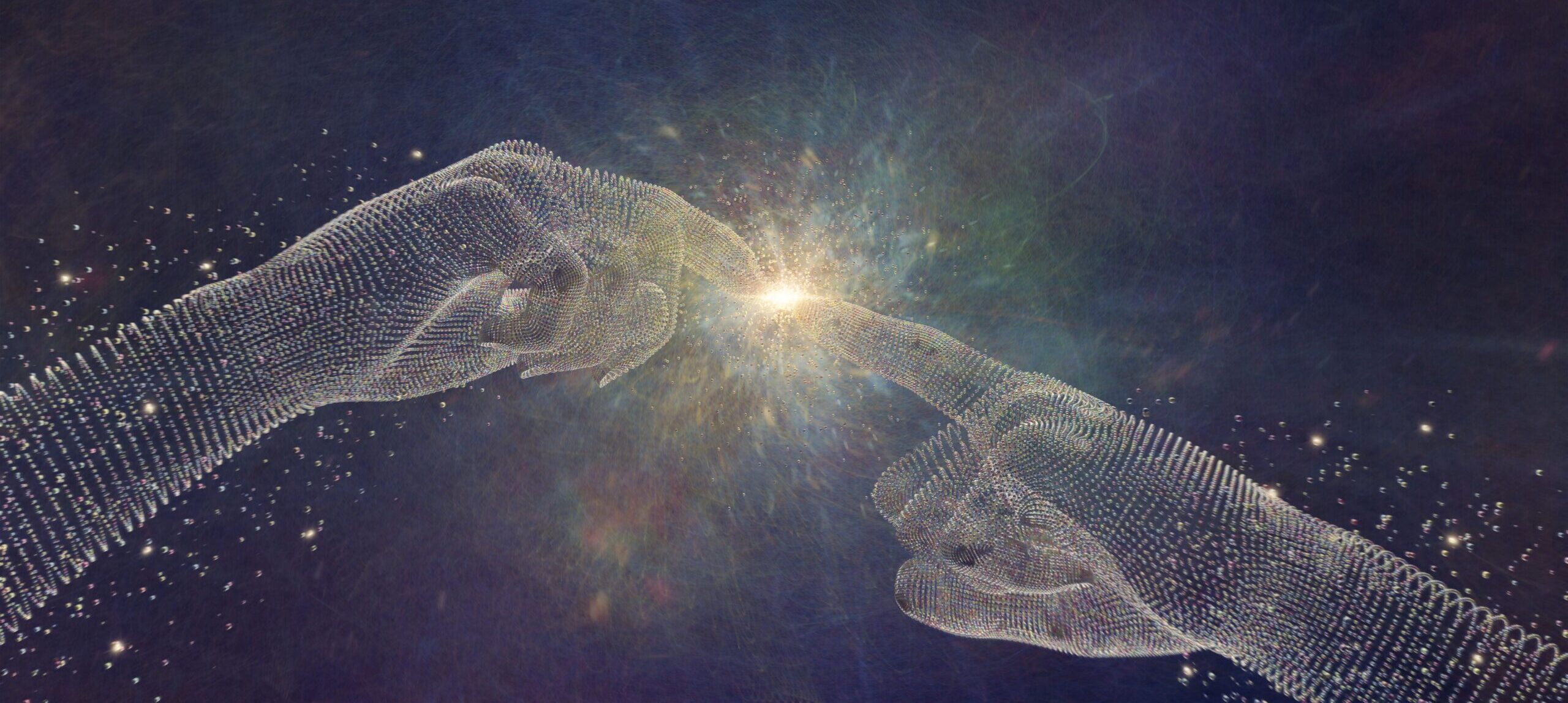The American right should be extinct by now. Progressives occupy almost all of the commanding heights of the nation’s institutions—in the traditional and social media, in the universities, and even in corporate boardrooms. The permanent federal bureaucracy reliably serves progressive ends, and Democrats control the White House and Congress. If evangelical voters still lean right, the same cannot be said about the leadership of many evangelical Christian organizations, which today are in the throes of self-doubt—and self-purging—over something called “Christian nationalism.” Mainline Protestant churches remain progressive, and the Catholic Church’s hierarchy in the U.S. is not notably conservative.
With so much institutional power, and a demonstrated willingness to use it ruthlessly to “cancel” anyone who voices the wrong thoughts, progressives should be on the cusp of total victory. But instead a Republican resurgence in Congress this November looks almost inevitable, and President Biden’s age and approval ratings give a dismal forecast of his prospects for a second term. Would Vice President Kamala Harris be a stronger contender in 2024? Few Democrats think so. Yet to skip over her would risk a bitter struggle over the nomination and, what may be more damaging, would discredit the party’s entire narrative about its commitment to nominating blacks and women.
Losing the next two elections might not seem so terrible, however, in light of what little legislative success the Democrats have enjoyed while in the majority. In 2020, with President Trump beleaguered by the outbreak of COVID, impeachment, the George Floyd riots, and a years-long propaganda campaign depicting him as a stooge for Vladimir Putin, Republicans nevertheless exceeded expectations in November. The most favorable possible political environment, combined with a media that was more willing than ever to put its thumb on the scale—by suppressing news about Hunter Biden’s laptop, for example—was not enough to give the Democrats a secure hold on power. And their performance with what power the public did entrust to them has only made them more unpopular.
An election cannot pry the media, academy, and corporate world out of the hands of progressives. But there is panic on the left any time any institution defies their ideological stranglehold—as if they fear nothing more than competition, even when the competition is at a considerable disadvantage. Was Parler really going to challenge Twitter or Facebook for market share? It had to be shut down before it could get the slightest chance to do so: removed from the Apple app store and booted off of Amazon’s internet servers. When Elon Musk showed interest in buying Twitter, the horror from progressives was palpable. Social media and mainstream media alike have invested heavily in fighting a propaganda war against “disinformation,” which seems to mean any news coming from sources other than themselves. They fear samizdat—which literally means “self-publishing”—as much as any Soviet commissar of old.
There is misinformation, disinformation, and arrant nonsense aplenty on the Internet, of course. What is telling is that the progressive left does not trust readers themselves to distinguish between truth and falsehood. That is a remarkable admission of defeat coming from the side of the ideological spectrum which is, after all, in control of the schools that teach Americans how to read (and what to read) in the first place. Again a Cold War-era parallel suggests itself: Communists in the Eastern Bloc had a total monopoly over media and education. Yet they still could not get people to believe what they wanted them to believe—what they needed them to believe to stay in power.
The smallest resistance to a force that claims total ownership of your mind is a total victory, in principle if not for the moment in the material world, because institutionalized ideology is ultimately all or nothing. If it cannot be all, then it is, in principle, nothing. Unfortunately, in practice it may continue to have hideous consequences.
For all these reasons, the prospects for conservatism are far from hopeless. The ineluctable, ongoing failure of the left—as a philosophy of government and as a way of life—creates an opportunity for the right. But which right, if any, is capable of seizing that opportunity is an open question. Conservatives are fortunate that they have many possibilities to consider: populism, fusionism, integralism, center-right technocracy, politically skeptical Burkeanism, national conservatism, and a great many more. Few if any of these are fully worked-out programs, but then such programs are not really the stuff of politics or of American life. These labels are most useful for the tendencies they identicate, suggesting how statesmen and contributors to public opinion view the aims and limitations of politics.
Several manifesto-like books or historical interpretations of conservatism have been published recently, and doubtless more are on the way. But to get a sense of the fundamental possibilities and hazards facing the right today, an overview that looks not at particular schools of thought but at the main currents flowing into them may be helpful. Taking the long view, since the 19th century there have been four mainsprings of conservatism as a political and intellectual force: public religion, “country” patriotism, the philosophy of balance, and anti-leftism.
***
“Public religion” can mean several things. At times it has meant a conservative attachment to established religion, as suggested by the 19th-century quip that the Church of England is the Tory party at prayer. John Adams and the Federalist Party, arguably the American republic’s original conservatives, also believed that publicly supported religion was essential to the well-being of the states. Adams himself had unitarian leanings, and his policy toward Christianity was informed by utilitarian considerations—his conservatism was not ultimately a conservatism of faith but one rooted in the philosophy of balance. But popular support for public religion tends to come from firm believers, and they are the riverbed of this particular channel of conservatism.
In the 20th century and today conservatives who are conservatives for primarily religious reasons have wanted to see more acknowledgement of faith in the public square—in contrast to the “naked public square” described by Fr. Richard John Neuhaus—and to see public policy more strongly informed by faith. That could mean in practice the “compassionate conservatism” and “faith-based initiatives” championed by the evangelical journalist Marvin Olasky and the George W. Bush administration. But instead of more public funding and access to government resources for faith-based charities, public religion can also mean simply the election of men and women of strong faith who will act on their religious convictions in policymaking. To progressives that sounds like “imposing” their religion on the public, but what it means at root is that the conservative who believes his religion is true will quite naturally want his public service to be in line with the truth—just as surely as a liberal or progressive wants his own public service to be in tune with his liberal or progressive values. Although there are some religious conservatives who would like to return to church establishments, most envision an indirect connection between faith and politics, not directly between church and state, but through the medium of the faithful statesman and voter communicating their commitments from the faith-formed conscience to the policy realm.
***
“Country patriotism” may sound redundant as well as tendentious. The term is not meant to suggest that anyone who is not a conservative is not patriotic, however. (For that matter, the fact that there are conservatives whose conservatism is predicated on a public role for religion does not imply that only conservatives ever envision such a role—the point is simply that this is one of the primary sources giving rise to conservative politics.) Country patriotism is a specific kind of patriotism—not just love of one’s country, however understood, but love of country as opposed to city, or else a patriotism of country as opposed to court, as in 18th-century British politics. This wellspring of conservatism is one source of the populist right. It’s characterized by a preference for home: in contrast to what Roger Scruton called oikophobia, the progressive preference for strangers, country patriotism might be called oikophilia. Its opponents associate it with xenophobia, isolationism (or an “us against them” jingoism), and general moral and intellectual backwardness and parochialism.
Without getting into the complexities of the old British conflict between court and country ideologies, the “squirearchy” that was long the backbone of the Tory party was a fastness of country patriotism. Today what might be thought of as the “Red State” mentality is a form of country patriotism. Traditional Southern conservatism was a type of country patriotism, too, despite the arguments of non-Southerners that a fondness for the Confederacy could hardly be consonant with U.S. patriotism. Country patriotism is compatible with some forms of nationalism, but it is an awkward fit with universalistic ideas, including the idea of the U.S. as a universal “proposition nation.” Because it is particularistic, country patriotism sometimes clashes with the universal commitments of religious conservatives—but for the most part there is a close connection and high degree of overlap between those who are conservatives first of all for religious reasons and those who are conservatives for reasons of local loyalty.
***
“The philosophy of balance” is an awkward name for an elegant set of ideas. Some of these ideas are often labeled as part of the “Scottish Enlightenment,” but that term is unhelpful, as congruent ideas can be found among non-Scots, and in several respects this Enlightenment-era philosophy is opposed to the Enlightenment. James Madison and John Adams, as well as many other Founders, are exponents of the philosophy of balance. So too is Edmund Burke, whose economic thought was acknowledged by Adam Smith himself as being very much in harmony in Smith’s own ideas. And Smith, like Burke, thought carefully about the emotional warp and weft of the social order.
The 20th-century philosopher Anthony Quinton called conservatism “the politics of imperfection,” and the philosophy of balance reflects that. Individual thinkers like Madison, Adams, Smith, Burke, David Hume, and indeed George Washington had a great many points of disagreement as well as agreement with one another. But the general contours of the philosophy of balance might be stated as follows: Men are often, or always, ruled by their passions. Reason is a force of restraint, but it is rather feeble. Human beings are strongly self-concerned, which does not always mean selfish, but it does mean that subjectivity of feelings and judgment must be taken into account when trying to understand society and politics. Wise policy must work with the grain of human nature. Conflict and selfishness cannot be eliminated—because of the different passions, interests, and degrees of commitment to reason found among people—but they can sometimes be channeled in socially productive directions. Such is the logic of Smith’s “invisible hand” in market action and such is Madison’s view of faction’s capacity to check faction in Federalist 10.
The 18th-century exponents of the philosophy of balance usually recognized religion as a useful tutor of human passion, and as a source of both alms and—even more important—psychological compassion. Yet while some of the adherents of this philosophy were personally devout, many were skeptical or heterodox in one degree or another. There is often an incipient utilitarianism behind their thought, but unlike later full-blown utilitarians, they did not imagine anything like a rational maximization of utility. They were too strongly in touch with the subjective side of human nature to think in Benthamite terms, let alone those of the homo economicus of the 20th century and beyond.
The first generation of neoconservatives, at its best, drew from the philosophy of balance. So do some species of latter-day classical liberals and right- or center-right libertarians. Thomas Sowell, with his comparison of the “constrained vision” to the “unconstrained vision,” is another contemporary exemplar of the philosophy of balance. In foreign policy the philosophy of balance finds expression in some varieties of realist thought. The philosophy of balance, like conservatism originating in a commitment to public religion and conservatism rooted in country patriotism, can find expression in contrasting subspecies of right-wing thought. But even when there is a contrast, a hallmark of the forms of conservatism flowing from the philosophy of balance is an awareness of tradeoffs and tragedy in politics and human life—this conservatism is anti-idealistic, although at its worst it can become overconfident in its own rational counter-rationalism. This was Michael Oakeshott’s critique of F.A. Hayek: “A plan to resist all planning may be better than its opposite, but it still belongs to the same style of politics.”
***
Finally, “anti-leftism” is simply but powerfully a feeling of revulsion at the works and ways of progressives, Marxists, and the like. The parent appalled by radical sexual curricula in public schools, the voter outraged by rising crime, the citizen who feels his country’s honor and national interest are threatened by weak—or worse—foreign-policy elites, and the man or woman who is simply fed up with the smugness and incessant propagandizing of the left are all examples of people whose fundamental reason for being on the right is that they are against the other side. They may not have read any Burke or Hume. They may not go to church. And they may not even be very attached to the place they come from. But they refuse to be insulted and abused by left-wingers and the policies they promote.
These are not always ideologically unsophisticated backlash voters, however. Anti-leftism can take intellectual forms, sometimes as sharp critiques of political correctness, sometimes as reactionary ideologies that are not rooted in religion, country, or 18th-century philosophy but simply in the desire not to be liberal, progressive, or in any other way left-wing. Donald Trump certainly benefited from the votes of many anti-left Americans in 2016 and 2020, and Republicans will benefit from them this November—but it would be a mistake to think that all Trump voters or all Republicans are first and foremost anti-left. The evangelical vote is not simply anti-left, and the immigration-restrictionist vote also isn’t. As with the other wellsprings of conservatism, anti-leftism can take opposing forms in practice: there can be more than one kind of anti-left.
***
One of the ironies of the left’s ascendancy over our institutions is that it weakens forms of conservatism that liberals find more tolerable, and it strengthens the forms that liberals and progressives find most terrifying. The more power the left accumulates, the more arrogant and radical it becomes, the more of a backlash it engenders. The fierce anti-left benefits from this, while more reflective—critics would say timid—forms of conservatism increasingly seem out of touch or outright irrelevant. This is one reason why Donald Trump easily overcame the champions of every Republican ideological grouping in the contest for the GOP’s 2016 presidential nomination. Whatever else he might be, Trump was a fighter. Other would-be nominees seemed, by comparison, to be trimmers, meditators, and compromisers.
But there is a deeper reason for the rise of the anti-left: namely that the ascendant left has gradually and successfully undermined the social foundations of the other sources of conservatism. Progressive education and the campaign for same-sex marriage and normalizing transsexuality have contributed to the dropoff in religious affiliation among younger Americans (and older ones, too). “Woke” education’s war on dead white males has depreciated the study of European intellectual history, and particularly its conservative components. The philosophy of balance is written right into the U.S. Constitution, but the Constitution is now, so our children are taught, to be dismissed as a mere charter of racial iniquity. Forget 1787 or 1776—the real foundations of the country are to be found in 1619, as seen through the corrective lenses of race theory, of course.
And country patriotism is virtually a synonym for racism, as progressives and their allies would have it. Local self-government is also “undemocratic”: towns and rural counties should be ruled by the superior numbers of voters who live in cities. From another direction, country patriotism is attacked by liberal economic policies that foster industrial decay, capital mobility (especially across national borders), and mass immigration. The fact that Americans used to relocate within the country more often than they do now is not as dispositive of the decline of country patriotism as one might think—the key question is the character of place itself, and whether in leaving one place there is another place of strong economic and cultural character to which to move. If every place is the same—same woke curricula, same global corporations, same social media—you might as well stay where you are.
Not every place is the same, of course: cities are still centers of growth, if not always the same cities as before. But here conservatives confront a grim irony: red states (such as Texas) are increasingly dependent on blue cities (such as Austin). Cities have their own forms of patriotism, to be sure, but it isn’t the “country” patriotism that tends to create conservatives.
The different sources of conservatism intersect and mingle with one another. A flood in one channel can also lead to a change in the underlying landscape. This is what may happen if progressives are successful in eroding all the other channels of conservatism except for the anti-left. Increasingly, even those other channels—public religion, country patriotism, the philosophy of balance—will take on the character of the anti-left. Should this happen, religion will decay into mere anti-secularism, country patriotism will give way to anger at rootlessness, and the philosophy of balance will dissolve into a ruthless Machiavellianism. If this frightens even many on the right, it should jolt the reasonable left (such as it is) to change its own ways, lest the drive for total power bring about a much greater counterforce. This, however, is the reverse of what progressives are doing: faced with a growing opposition, they demonize the very principle of opposition all the more. Look at the ease with which progressives now throw around terms like “illiberal” and claims that Republicans are “a threat to our democracy.”
Instead of correcting its mistakes, the left ever more desperately tries to silence and exclude its critics, while redrawing the lines of acceptable discourse so that no one to the right of David French or David Frum is considered patriotic. Liberals, if not progressives, know that the race theory and radical sexuality being imposed on schoolchildren is reprehensible. But liberals as well as progressives have been overcome by their own anti-right tendencies, so they will defend even a bad cause if they think it will allow them to “own the cons.”
As for conservatives, they can hardly fail to make the most of the growing anti-left backlash. The challenge, quite apart from which school of thought on the right hopes to prevail, will be to preserve anything at all of the other sources of conservatism. The left will sooner or later—both sooner and later—collapse. What will take its place?
Daniel McCarthy is the editor in chief of Modern Age.














